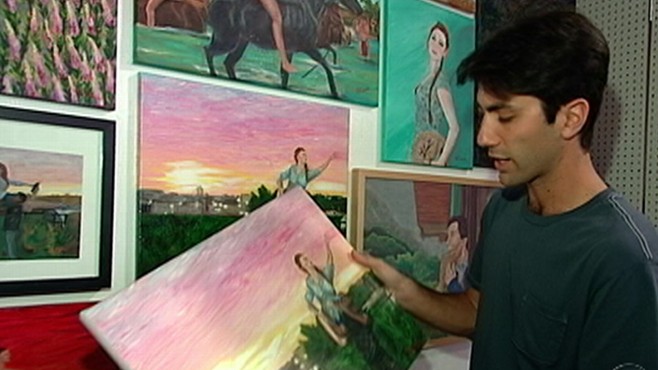The Catfish documentary was interesting and surprising to me. This woman from Michigan created fake Facebook profiles for her daughter Abby and Meghan as well as fifteen other people. She is an artist, but made it seem like her daughter Abby who is eight years old, was doing all of the painting. "Abby" connected with Nev who is a photographer in New York, and painted one of his photographs. They started this online relationship by having conversation and sending eachother photographs and paintings. Nev talks to Abby's mother on the telephone, which takes the relationship to a personal level.
Nev then discovers Abby has an older sister, Meghan, who he finds attractive and develops a relationship with. Nev and Meghan talk everyday, and she send him music that she recorded. They start to develop romantic feelings towards each other, and text and talk on the phone as well. Nev notices something strange when he finds the exact same song "Meghan" sent to him on Facebook somewhere else on the internet. Nev and his friends decide to go see if this girl is real or not. They discover that Meghan's farm is vacant, and the postcard he sent to her was still in the mailbox with "return to sender" on it. They then drive by Abby's art studio, which is also vacant. They go to Abby's house, where they meet her mother and the real Abby. Nev discovers that the entire family is made up by the mother on Facebook. She created a profile for many people and pretended to be all of them, including Meghan, who Nev had a developing "relationship" with.
This documentary shows how crazy people can be, to go through all the time and effort not only create fake profiles, but create fake lives and make someone else believe that it is real. The mother lied to Nev so elaborately that it is shocking for me to comprehend. She made up addresses that were real places, she went through the trouble to "record" songs for him when she actually searched and found them on the internet and posted them as if Meghan was the artist. She also talked to Nev on the phone as herself and ad Meghan.
Nev finds out that a real Meghan does exist, but she does not talk to the family. The mother found pictures of someone else on Facebook and used them to create Meghan and Meghan's friends.
Nev felt betrayed and hurt by the entire situation, as anyone would be. The mother even lied about having cancer and to her husband who thought Nev was her best customer for her artwork. She escaped from her life taking care of two mentally challenged boys by going online and pretending to be these people. She explained it as "being parts of myself" and "becoming who I want to be." She had dreams of being a dancer and felt she lost herself when she got married and stopped her career. I do not feel bad for this woman, because everyone can be who they want to be; she is using her life as an excuse. If she is not happy, there are other ways to help herself than by lying to an innocent person. I have no pity for someone like that who lies to other people to make themselves feel better.
Her husband describes "catfish" as people who keep you on your toes in life. The mother certainly did that to him and to Nev.
This whole situation can be supported by Web 2.0 from Andrew Keen's point of view. Keen is negative about democratized media and how everyone can post things online. The mother creating fake profiles supports Keen's theory of how there is no middle-man, and people cannot tell what is real from what is fake. Not only can people create fake profiles online, they can also steal other people's work (like music) and make it seem like it is their own work. This is the negative side of Web 2.0.
FINAL TEST WED
14 years ago













